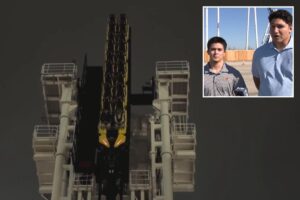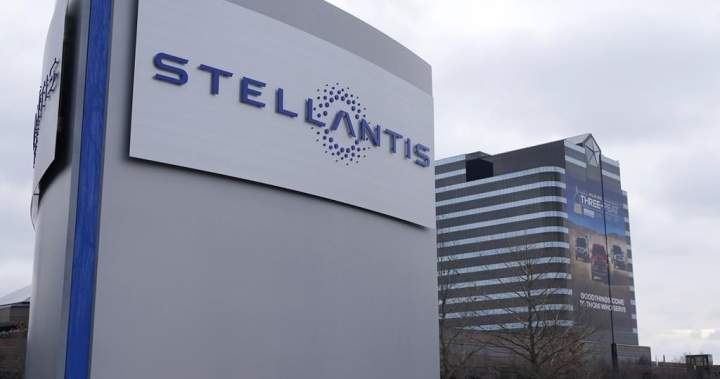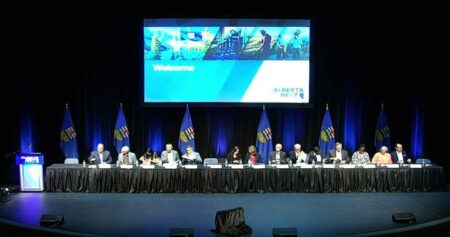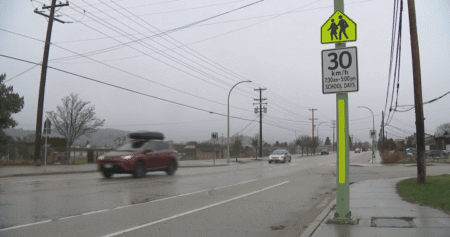Stellantis announced on Tuesday plans to move some production out of Brampton, Ont., to the United States, a move union leaders say is sacrificing Canadian jobs “on the Trump altar.”
The news comes amid the ongoing trade war, with U.S. tariff policies imposed by President Donald Trump directly impacting Canada’s manufacturing sector — especially for automotive assembly and parts manufacturing.
Unifor, the union representing Canadian auto workers at Stellantis, said in a statement that their jobs “are being sacrificed on the Trump altar” and urged governments to stand up for their industry and send a strong message to any corporation taking “the same egregious actions.”
Here’s what you need to know.
Stellantis’s announcement outlined plans to invest US$13 billion to expand its operations in the United States and create more than 5,000 new jobs south of the U.S.-Canada border.
Part of that expansion plan includes a $600-million investment to reopen the Belvidere Assembly Plant in Illinois to expand the production of Jeep Compass models — which are currently made in Brampton — in 2027.
In July, the automaker reported a net loss of US$2.7 billion for the first six months of the year, and that it expected further financial struggles as a direct result of U.S. tariffs.
By moving production to the U.S., the company may be able to avoid all of the newly imposed tariffs.
In Canada, this means the domestic automotive sector could take a hit, although it isn’t clear yet how many jobs could be lost.
Unifor said it was told the switch means the assembly production of the Jeep Compass currently done at a facility in Brampton will be moved to the plant in Illinois. This has not yet been confirmed by the company.
Stellantis hasn’t mentioned whether it plans to close or revamp the Brampton Assembly Plant. The company has paused plans to retool the facility in Brampton since February, while still producing Jeep Compass vehicles.

Get breaking National news
For news impacting Canada and around the world, sign up for breaking news alerts delivered directly to you when they happen.
A Global News request sent to Stellantis for confirmation about the potential impacts to workers in Canada, and specifically in Ontario, has yet to receive a response.
Speaking to Global News, automotive industry representative and president of the Automotive Parts Manufacturing Association Flavio Volpe says the Brampton facility has seen as many as three generations of workers. He adds that these not only include the roughly 3,00 workers within the facility that are at risk, but also the broader workforce, representing roughly 12,000 who support the plant, including parts manufacturers.
“I spoke to the federal government and the provincial government this (Wednesday) morning. I said, ‘We support and expect that you hold them (Stellantis) to account,’” Volpe says.
He goes on to say that the company needs to come up with a new plan for the Brampton plant.
“Get a car assembled there. If it’s not the Jeep Compass, get something else. Everything else is unacceptable.”
Prime Minister Mark Carney said the federal government is committed to supporting Canadian autoworkers, and with the help of the provincial government, will pressure Stellantis to minimize job losses for affected workers.
“Canada’s new government will always be there for Canadian auto workers, who are foundational to the Canadian economy,” Carney said in a statement, adding that the federal and provincial governments “are working with the company” to protect workers and create new opportunities for them “in and around Brampton.”
A Stellantis facility in Windsor, Ont., is still expanding to produce electric vehicle batteries, and the company hasn’t announced any changes to these plans.
In May 2022, Stellantis committed C$3.6 billion to transform both the Brampton and Windsor assembly plants to align with the company’s electric vehicle and battery development goals. This was to be matched by a commitment from the federal and provincial governments of $1.4 billion to total $5 billion.
“In Windsor, they’re continuing to build out their battery facility. So, on one hand where we’ve got a loss, on another hand, we’ve got a gain. Companies are planning horizons five to 10 years for these production facilities,” says David Abrams, president of Global Automakers of Canada.
“I’d like to think at the end of the day that we’ll find a situation where we can rise above the current tumult with the Trump administration and get back to something that more or less resembles some certainty in the North American environment.”
Although the company is still on track to finish expansion plans in Windsor, it still may be vulnerable to sudden changes.
“Anything Stellantis has invested in Canada, any commitments they’ve made, have to be questioned. I wouldn’t bank on any of those assurances or the fact that they’d honour that agreement,” Volpe says.
Stellantis has made commitments to build vehicles and parts in Canada, including at facilities in Brampton and Windsor, based on funding promised by both the federal and provincial governments if it meets those commitments.
If it doesn’t follow through on those promises, it may not get the money promised.
This means that although Stellantis’s decision could result in an economic hit, taxpayers may not be losing any money as a result of the company pulling out of those commitments.
“The agreements are not on handshakes — they’re on legal documents. So as long as we have the rule of law and we have clawback terms, the taxpayer will be OK,” Volpe says.
“The long commitment on Stellantis was on production, so the taxpayer is on the hook for the vast majority of its commitment on production. If Stellantis doesn’t produce anything, then the taxpayer is gonna be OK.”
Volpe adds that although it should be good news that likely no funding will be lost by governments on behalf of taxpayers, the bigger concern is the loss of investment potential in the Canadian economy as companies like Stellantis pull out of their commitments.
Stellantis estimates the transition to build some Jeep models in Illinois could be completed by 2027.
Carney is still working on a finalized trade deal with Trump that is aimed at minimizing the effects of tariffs and protecting Canada’s economy and industries, including the automotive sector.
The move by Stellantis may be a sign that some companies can’t take as much of a wait-and-see approach.
“The U.S. government has decided that the best way forward is to have a 25 per cent tariff on products coming from Canada. I warned that this would happen and here it is,” Volpe says.
“The fact is, though, the company had a choice. Other companies are absorbing the impact and trying to work with the White House and remembering how important the Canadian market is. You absorb the impact, and you try to wait out the president as the renegotiations are happening.”
Ontario Premier Doug Ford issued a statement Wednesday saying he was disappointed in Stellantis’s decision, and urged the company to “live up to their promise.”
Read the full article here














